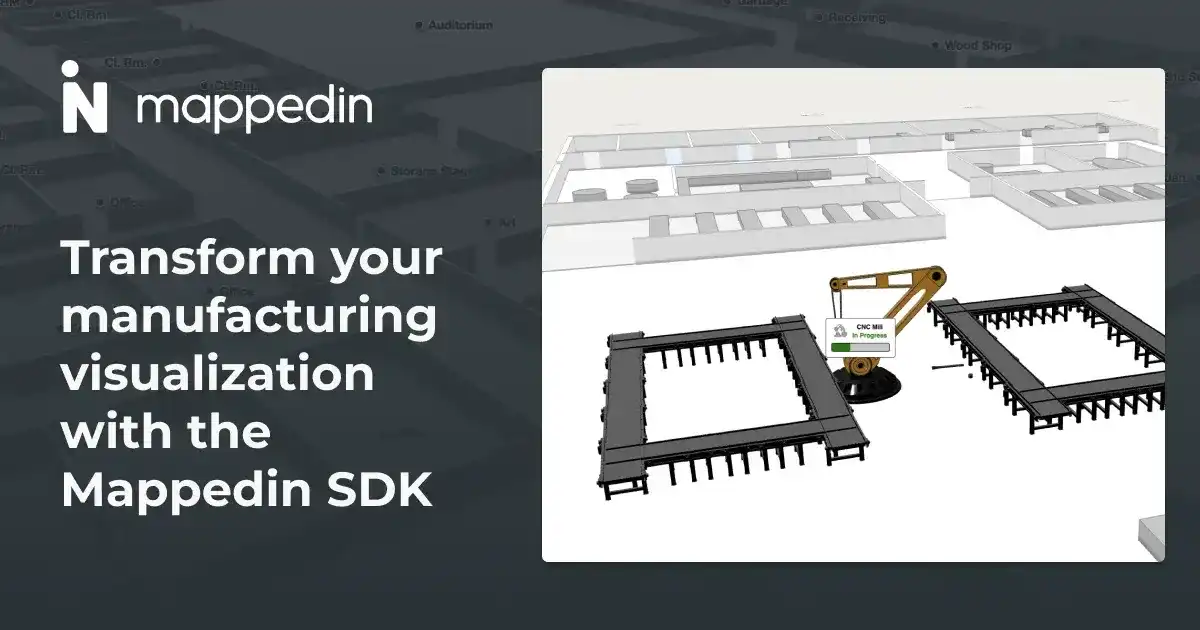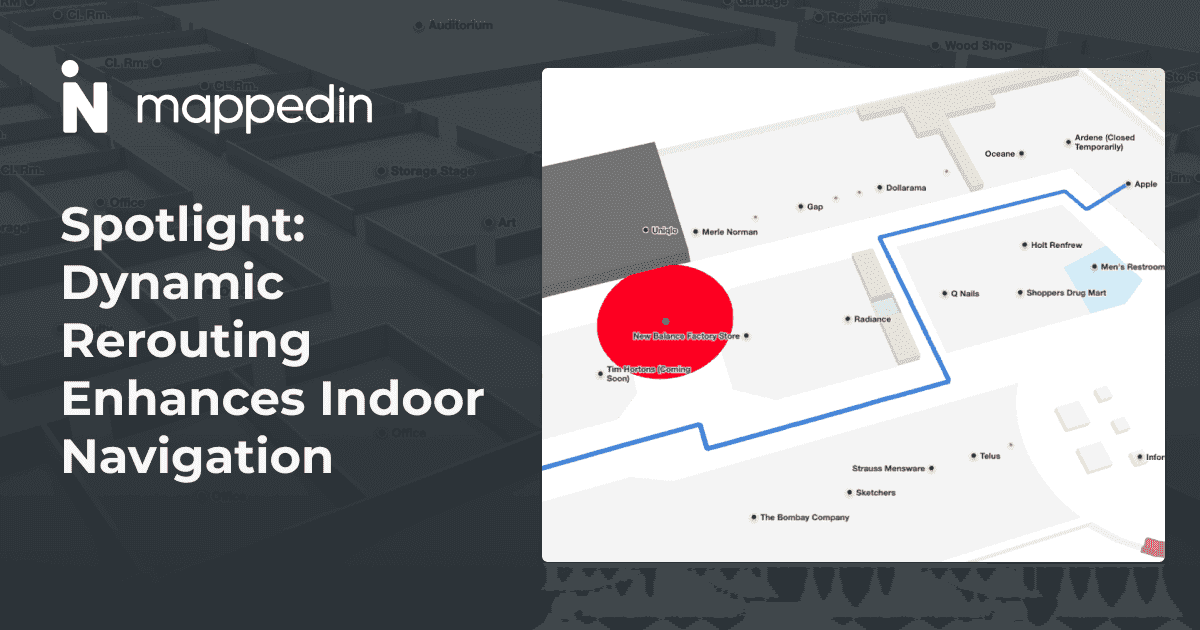With real-time tracking of inventory, machinery, and other assets within a warehouse, employees can optimize warehouse functionality and save valuable time in day-to-day operations. Paired with a digital map, asset tracking systems provide an accurate visualization of assets and can unlock new efficiencies for warehouse management.
Everything you need to know about asset tracking for warehouse
Asset tracking solutions enable warehouses to easily monitor and manage large amounts of inventory, machinery, employees, warehouse pallets, storage bins, and valuable assets. Most facilities already have a Warehouse Management System in place to support and optimize functionality, distribution, and overall supply chain management. What is missing, however, is the ability to visualize this location data within the context of the warehouse or manufacturing facility. That’s where indoor maps come in.
How asset tracking systems can streamline your warehouse
Asset tracking software paired with a digital warehouse map provides solutions for streamlining operations and increasing efficiencies. Warehouses can visualize the real-time movement of assets such as inventory, personnel, production materials, and forklifts on a digital map. While providing end-to-end visibility and accountability of assets, employees can easily locate and populate the most efficient route to the equipment or products they need; simplifying picking and packing processes and preventing delays.
The technologies behind asset tracking
Warehouses can track, plan, and manage assets using a wide range of asset tracking technologies. Let’s explore them.
1. GPS asset tracking
Global Positioning System (GPS) tracking can be used to monitor the movement of inventory and machinery by attaching GPS tracking devices to assets. However, GPS technology has low signal strength and low accuracy when used indoors. To ensure exact positioning and accurate location tracking inside warehouses, indoor positioning technology (IPS) should be implemented.
2. Bluetooth asset tracking / beacons
Using Bluetooth Low Energy (BLE) beacons and tracking tags, assets can be tracked within and around a warehouse with a high level of precision. However, for maximum location accuracy, warehouses would have to invest in a significant amount of beacons which can be costly.

3. Passive RFID asset tracking
Passive radio-frequency identification (RFID) tags can be a flexible and affordable option, but have the disadvantage of a shorter read range. They are powered by the radio frequency energy transmitted from RFID readers and are commonly used for item-level tracking such as consumer goods.
4. AR-based asset tracking & indoor navigation solution
With an augmented reality (AR) based tracking system, warehouses can place QR codes on the assets they would like to track or maintain. Personnel can then use handheld devices to view them and efficiently navigate to the asset’s location.
What are the benefits of asset tracking?
Asset tracking solutions have many benefits for warehouses, including:
- Visualizing in-warehouse inventory and in-transit products
- Improving inventory management and accuracy
- Optimizing picking and packing processes
- Monitoring equipment condition and usage
- Reducing errors and delays
- Preventing inventory theft and misplaced items
- Identifying areas to streamline business operations
Locate your assets in seconds through an automated system
Warehouses should always have access to the most up-to-date information on their physical assets. Whether an employee needs to locate a forklift to get a job done, or find specific products to fulfill an order, they will need to know where items are located at any given time. An automated asset tracking system provides real-time tracking updates of assets including their exact location, movement, condition, and ownership. Using a mobile device, employees can quickly locate and navigate to a specific product or piece of equipment, saving valuable time in day-to-day business operations.

Keep your assets in top shape through asset tracking systems
With continual use, warehouse equipment and machinery will experience a great deal of wear and tear. To determine whether an inventory item needs maintenance or will last for years to come, warehouses can track asset life cycles - including their performance, usage, and condition. Employees can use this information to schedule maintenance activities more efficiently and ensure that equipment is serviced in line with asset performance standards.
Figure out how much money you’re spending on your assets
Through an asset management system, warehouses can also track asset expenses. From initial purchases to maintenance and repair costs, warehouses have full visibility over where money is being spent. Tracking expenses is a great way to cut costs, forecast inventory demand, and budget accordingly.
ROI from asset tracking and management
With detailed reports on costs of operations, asset costs, inventory levels, and budget plans, warehouse managers can efficiently track and review asset ROI. This information can help determine whether it would be beneficial to seek a new equipment provider, renew existing contracts, or cut down on unnecessary expenses.
Why use MappedIn?
Integrate your warehouse management system with indoor maps and real-time tracking to take control of your venue and improve overall operations. Intuitive wayfinding and a powerful Map Editor ensure that location data is always up-to-date. Visualize the movement of assets such as inventory, personnel, production materials, and forklift tracking on a digital indoor map.

Mappedin specializes in transforming 2D property floor plans into digital assets that can be edited in real-time. Our 3D interactive solutions make indoor location tracking easy and the Map Editor creates new efficiencies for warehouse management. Quickly alter floor plans, move inventory, add points of interest, and more.
Asset tracking for warehouses FAQs
What are the pros of GPS asset tracking?
GPS technology struggles to obtain signal strength in indoor environments, and may not be the preferred warehouse asset tracking solution. However, it can provide numerous advantages for outdoor environments such as:
- No transmission costs
- Low power consumption
- High level of accuracy for larger objects
- Long range
- Real-time location tracking
How can warehouses enable asset tracking?
Warehouses need asset tracking technology to enable real-time tracking of inventory, machinery, devices, warehouse pallets, and other assets. GPS, BLE beacons, barcode scanners, RFID and other technologies can be used.
How does asset tracking work?
Accurate indoor location tracking allows businesses to provide new efficiencies and experiences. Warehouses, offices, airports, hospitals, stadiums, and other venue types can use asset tracking software to efficiently keep track of equipment and items. Paired with a digital map, buildings can visualize asset location data, simplify access to information, and streamline inventory tracking and management. Contact us today to get started.
Share


